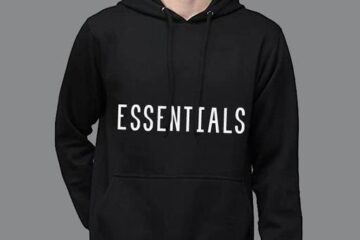What are the types of hair extensions?

What are the types of hair extensions?
Hair extensions come in various types, each with its own application method, pros, and cons. The choice of hair extension type depends on factors such as the client’s hair texture, desired look, budget, and maintenance preferences. Here are some common types of hair extensions:
Clip-In Hair Extensions
Application: Clips attached to wefts of hair are snapped into the natural hair.
Pros: Easy to apply and remove, no commitment, versatile for occasional use.
Cons: Not suitable for long-term wear, may cause stress on natural hair if not applied properly.
Tape-In Hair Extensions
Application: Pre-taped wefts are sandwiched around sections of natural hair.
Pros: Quick application, comfortable, reusable, flat and natural-looking.
Cons: Requires professional application and removal, not ideal for very fine hair.
Micro-Link or Micro-Bead Hair Extensions
Application: Small metal beads or rings are used to attach individual extensions to small sections of natural hair.
Pros: No heat or adhesive required, natural movement, reusable.
Cons: Requires maintenance, not suitable for very thin or fine hair.
Sew-In or Weave Hair Extensions:
Application: Natural hair is braided into cornrows, and wefts of hair are sewn onto the braids.
Pros: Long-lasting, versatile, suitable for various hair types.
Cons: Can be heavy, requires professional application and removal.
Fusion or Bonded Hair Extensions
Application: Small keratin bonds are attached to individual strands of natural hair using heat.
Pros: Natural appearance, long-lasting, suitable for various hair types.
Cons: Application can be time-consuming, requires professional removal, may cause damage if not applied correctly.
Halo Hair Extensions:
Application: A weft of hair attached to a thin, clear wire that sits on top of the natural hair like a halo.
Pros: No clips, tapes, or adhesives, quick application, easy to remove.
Cons: Limited styling options, may not be suitable for all hair types.
Flip-In or Flip-Up Hair Extensions
Application: A weft of hair with an adjustable wire that sits on top of the natural hair.
Pros: No clips or tapes, easy to apply and remove, versatile.
Cons: Limited styling options, may not be suitable for very fine hair.
Synthetic Hair Extensions
Material: Made from synthetic fibers.
Pros: Affordable, available in various colors and styles.
Cons: Cannot be heat-styled like natural hair, less durable than human hair.
Human Hair Extensions
Material: Made from real human hair.
Pros: Natural appearance, can be heat-styled, versatile.
Cons: Generally more expensive than synthetic, requires care similar to natural hair.
Keratin Tip or U-Tip Hair Extensions
Application: Small, pre-bonded extensions with a keratin tip are attached to natural hair using heat.
Pros: Natural appearance, long-lasting, versatile.
Cons: Requires professional application and removal, may cause damage if not applied correctly.
When choosing Hair course in Pathankot extensions, it’s essential to consider the client’s preferences, lifestyle, and budget. Professional application and maintenance are crucial for the health of natural hair and the longevity of the extensions.
What is the competition for hairdressers?
The competition for hairdressers can vary depending on factors such as location, specialization, and the overall demand for salon services in a particular area. Here are some common sources of competition that hairdressers may encounter:
Local Salons and Spas
Other nearby salons and spas that offer similar services can be direct competitors. The competition may be based on factors like pricing, service quality, and customer experience.
Chain Salons:
Large chain salons or franchises often have a strong presence and may offer competitive pricing or promotional deals to attract clients.
Independent Stylists
Independent hairstylists or freelancers who operate outside of traditional salon settings may compete for clients in the same geographic area.
Specialized Salons:
Salons that specialize in particular services, such as color correction, extensions, or barbering, may attract clients seeking those specific services.
Online Platforms and Apps
Online platforms that connect clients with freelance stylists or offer at-home services can provide an alternative to traditional salon experiences.
Beauty Schools
Newly licensed stylists from beauty schools may enter the market, offering competitive pricing to build their client base.
Changing Consumer Preferences
Changes in consumer preferences and trends can impact the demand for specific services. Keeping up with industry trends and offering relevant services is crucial.
Customer Loyalty Programs
Salons with effective loyalty programs and client retention strategies may have an advantage in retaining repeat customers.
Marketing and Social Media Presence
Salons with strong marketing strategies and a notable social media presence can attract new clients and build brand awareness.
Client Reviews and Reputation
Positive online reviews and a good reputation are essential for attracting new clients. Negative reviews or a poor reputation can hinder a salon’s competitiveness.
Economic Factors
Economic conditions can influence consumer spending on salon services. During economic downturns, clients may be more price-sensitive.
Technology Integration:
Salons that leverage technology for online booking, appointment reminders, and personalized client experiences may stand out in a competitive market.
To stay competitive in the Hairstyling course in Pathankot industry, it’s essential for hairdressers and salon owners to continuously assess and adapt to market trends, invest in ongoing education, provide excellent customer service, and differentiate their services from competitors. Building strong relationships with clients and creating a positive salon experience can also contribute to long-term success in a competitive market.
Read more article:- Buzz
Leave a reply
You must be logged in to post a comment.









